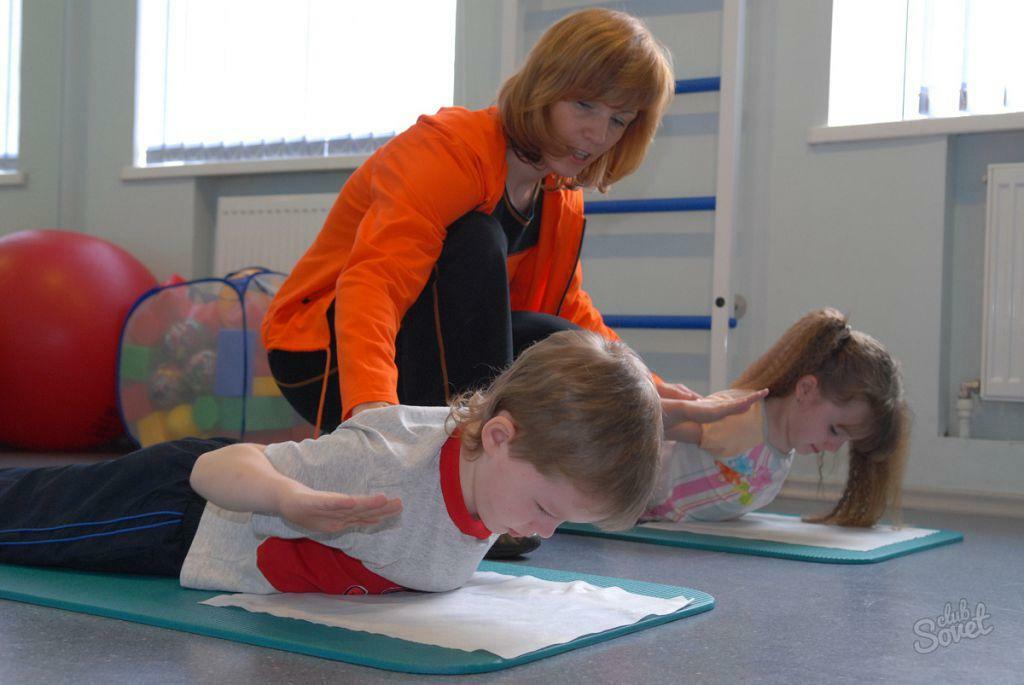Spondylosis of the lumbosacral spine is a common disease characterized by pathological changes in the intervertebral discs and the formation of osteophytes - bone growths. If time is not taken, these formations, increasing, can affect the spinal cord and provoke disability. It is impossible to completely cure spondylosis, but timely diagnosis allows minimizing the negative consequences and improving the quality of life of the patient.
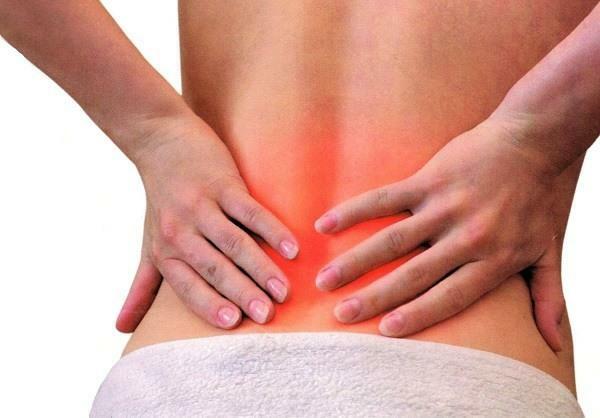
spondylosis of the lumbar-sacral spine
Content
- 1 material How does spondylosis
- 2 reasons
- 3 disease symptoms spondylosis
- 4 disease diagnosis
- 5 Methods of treating spondylosis
- 5.1 Therapeutic exercises with spondylosis
- 6 Prevention spondylosis
- 6.1 Video - spondylosis of the lumbar-sacral spine
Asthere is a spondylosis
Mobility of the spine is provided by cartilaginous discs and fibrous rings in them.
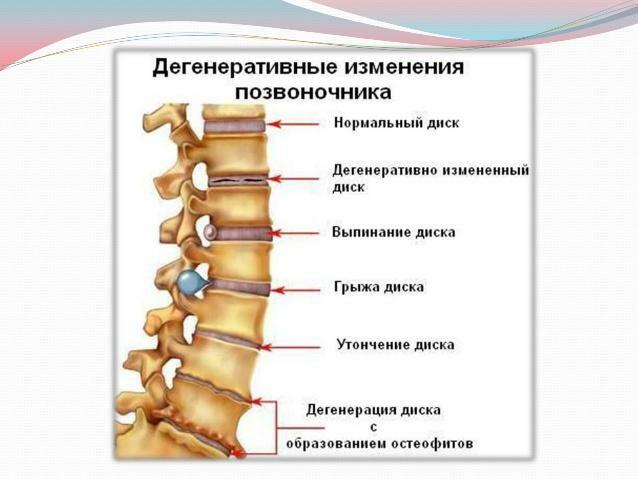
Degenerative changes of the spine
When the load exceeds the permissible norm, dystrophic degenerative changes begin in the rings. Part of the cartilage and connective tissues of the sacrum are damaged, which leads to a decrease in the damping functions of the discs and can provoke displacement of the vertebrae.

Displacement of vertebrae
The organism reacts to this in a rather peculiar way: the bone tissue on the surface of the vertebrae grows and forms specific growths-osteophytes. In the initial stage of the disease, osteophytes perform protective functions - they keep the vertebrae from displacement. But then the growths increase, press on the nerve roots, cause severe pain, prevent the spine from functioning normally.
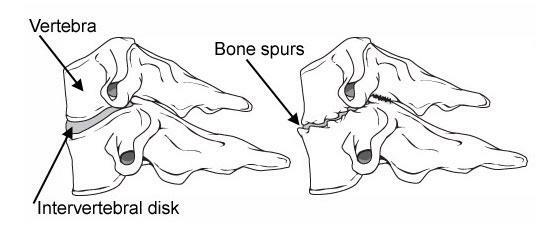
Osteophytes look
Causes of the disease
Most often spondylosis is diagnosed in people from 40 years old, whose body undergoes significant age changes. Deterioration of ligaments and bone tissue in many ways contribute to the appearance of pathologies and related diseases.

Spondylosis is common in people after 40 years of
. There are other causes of spondylosis:
- excess occupational stress;
- injury from bumps or falls;
- sharp overstrain of the back muscles in the absence of regular physical activity;
- , oncological or infectious diseases, diabetes mellitus, chronic diseases of internal organs, atherosclerosis, osteochondrosis;
- heredity;
- excess weight and improper diet;
- long-term seat or standing in one position.
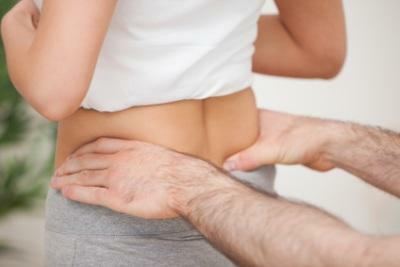
Spondylosis may result from injuries or illnesses
Symptoms of spondylosis
In the early stages of lumbar spondylosis almost no symptoms, and it is possible to determine the disruption of the structure of the discs only by radiography. Moreover, in 37% of patients the characteristic signs of the disease are absent and after the formation of osteophytes, and are manifested already in the late stages, when bone growths squeeze the nerve endings.
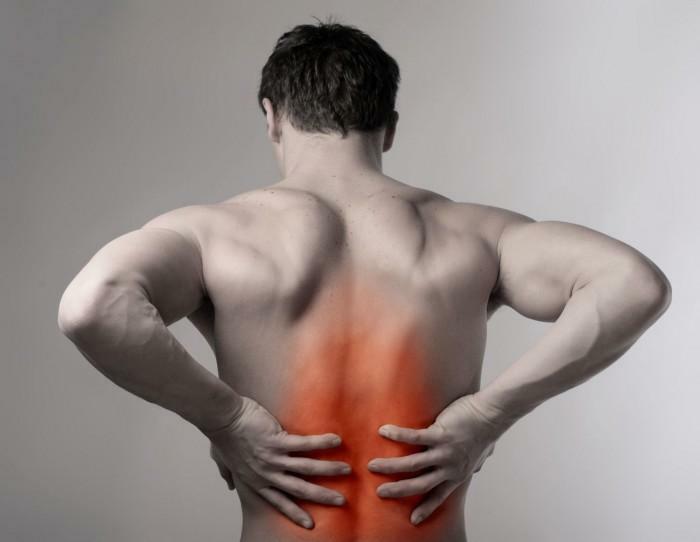
Almost 40% of people do not immediately notice signs of spondylosis
Common signs of spondylosis:
- mobility of the spine is limited, stiffness is felt;
- in the lower back, and then in the buttocks and legs there is aching pain, which is worse by the evening, and also under physical stress. Change of posture allows a little to ease the condition and reduce pain;
- when walking, there is lameness, in the legs periodically there is a feeling of tingling;

Claudication
- may appear to bend-unbend a knee or move one's foot to the side hard enough;
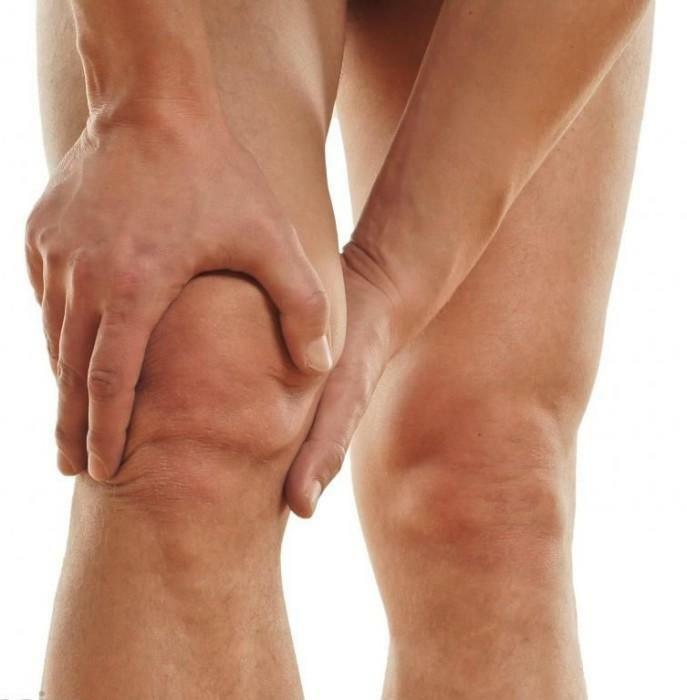
Discomfort when bending the knee
- the skin on the buttocks gradually loses sensitivity;
- shows reflex muscle tension and spasms in the lower back;

Spasms in the back of the
- when you press your fingers on the vertebrae of the lumbosacral zone, painful sensations arise.
The intensity of pain, duration depends on the stage of development of spondylosis. If you notice at least two of the signs listed above, this is a good reason to undergo a survey.
Diagnosis of the disease
For the diagnosis of spondylosis, a detailed examination of the patient using radiological methods is performed.
| Survey type | Description |
|---|---|
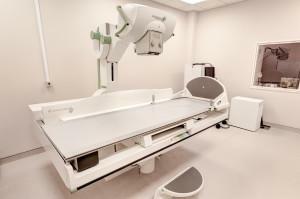 Radiography | The images are taken at different angles - standard and side projections. This allows to accurately assess the condition of the vertebrae, determine the degree of bony proliferation, detect the shifts |
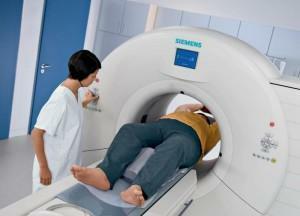 CT | The size of the discs and the width of the opening in the spinal canal are determined, the stenosis is determined in the early stages. |
 MRI | Gives a detailed picture of the ligamentous state, cartilage discs and nerve endings in the sacrallumbar region, allows to determine the nervous dysfunction of |
If MRI reveals lesions of nerve roots, an additional study is mandatory - electroneuromholography( abbreviated - ENMG).All this allows the doctor to choose the most effective way of treatment.
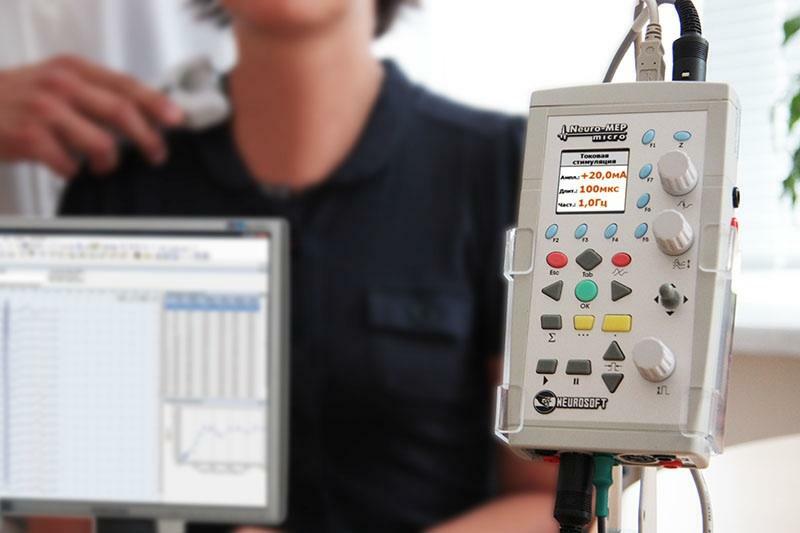
Electro neuromyography( ENMG) is a procedure performed by a neurologist
Spondylosis treatment method
Bone growth is an irreversible process, therefore it is impossible to completely cure spondylosis. Treatment only helps to avoid further overgrowth of osteophytes and to alleviate the patient's condition. This process is quite long, all procedures should be appointed by a specialist. Self-medication with the help of traditional medicine in this case is unacceptable, it can severely damage health.
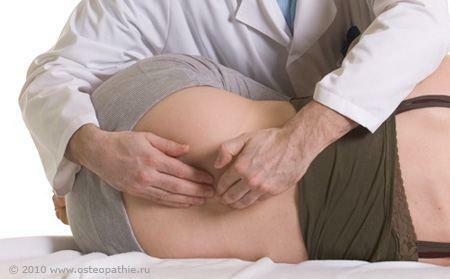
Treatment method
As a result of treatment procedures, pain sensations decrease or disappear at all, in the tissues of the lumbosacral region blood supply is improved, ligaments and muscles are strengthened. Friction between the vertebrae also becomes weaker, the structure of the cartilaginous discs improves. The formation of new osteophytes completely stops or slows down to a minimum, which positively affects the functionality of the spine.
| Type of treatment | Description |
|---|---|
 Medicated | Decisive does not matter, but it helps to eliminate pain and relieve spasms. With severe pain, tablets or injections of analgesics are prescribed, with chronic - tricyclic antidepressants. Effective against chronic pain in the back and ointments containing capsaicin. To remove spasms, muscle relaxants are used. In addition, the patient is prescribed chondroprotectors that promote the restoration of cartilage |
 Physiotherapy | The most effective method for spondylosis. At the initial stage of the disease, ultrasound is used to stop the growth of osteophytes. Further, the doctor prescribes paraffin heating of the affected area, electrophoresis with calcium, acupuncture. Massage procedures are shown only in the absence of side diseases. |
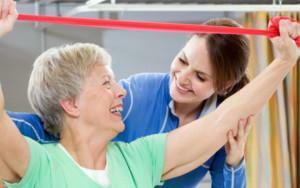 Therapeutic exercises | The doctor selects the program of exercises individually for each patient. LFK improves the functionality of the vertebrae, reduces pain, strengthens muscles and ligaments |
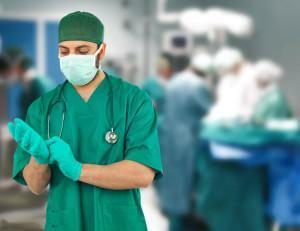 Operative | It is prescribed as a last resort when the pains are too strong and the medications do not help. In the course of the operation, bony outgrowths that press on the nerve endings are removed. |
Therapeutic exercises for spondylosis
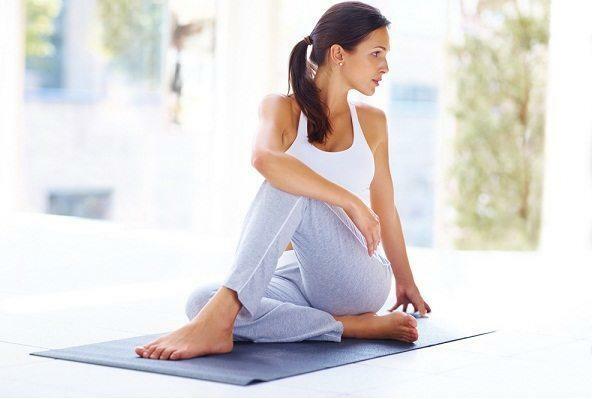
Therapeutic exercises for spondylosis
Wellness exercises are prescribed after the pain is reduced and the period of exacerbation will pass. It is best to conduct classes in the physio-cabinet, but if you do not have the opportunity to visit it daily, most of the exercises can be done at home. To do this, you need a bench or a sturdy stool about 40 cm high.
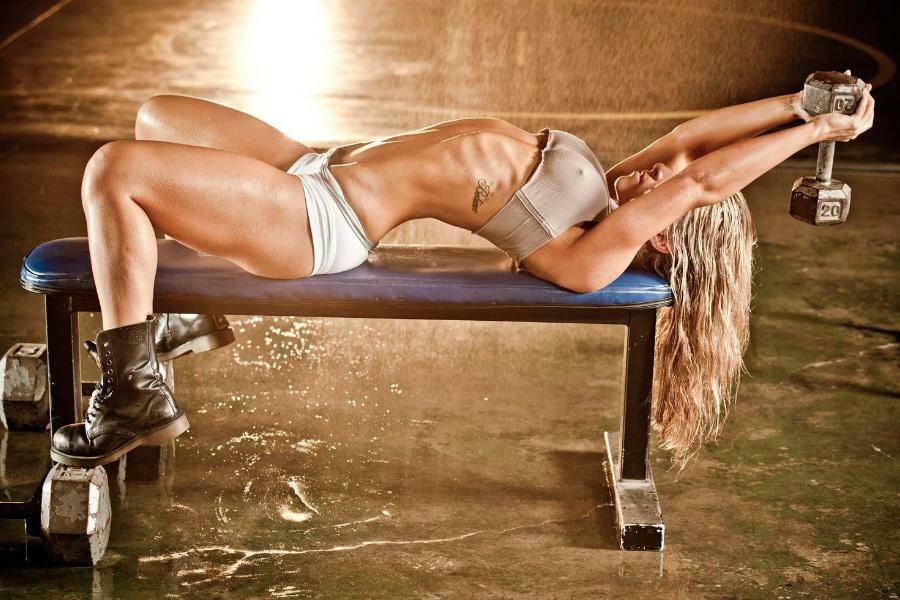
For exercise, you need a bench or stool
- Stand in front of a stool and put your hands on your waist. Then lift one leg to the stool, lean comfortably over the entire foot and begin to bend back, simultaneously bending the leg in the knee. The back should be bent as hard as possible. Then, changing your foot, repeat all over again.
- Sit on a stool and straighten your back. Bend your legs and pull your knees up to your chest, then, with your arms around your legs, stop for 5-6 seconds. After that, straighten your legs completely.
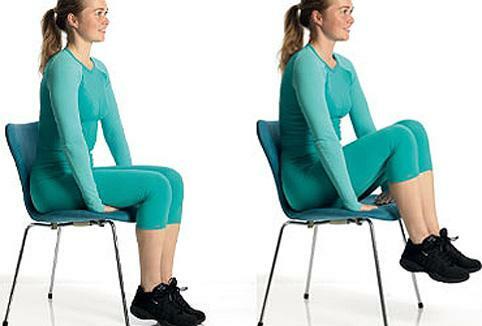
Pull your legs to chest
- Sit on the edge of a wide bench and firmly press your feet to the floor. Holding the bench with your hands, bend back as much as possible, while the feet should not come off the floor. Take your time slowly.
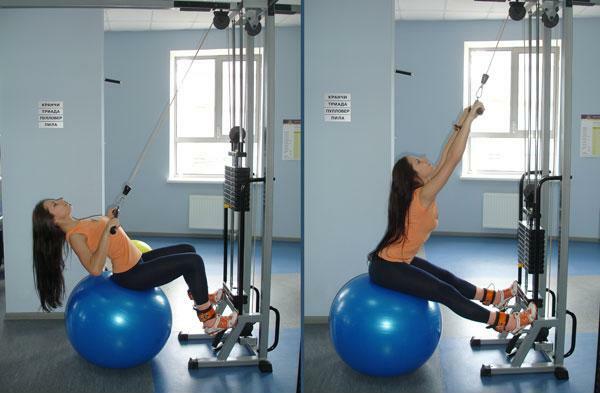
Variant of a similar exercise with the simulator
- Sitting on a stool, try to make a kicking exercise "scissors".The legs should be straight all the time.

Exercise "scissors"
Complete the exercises with inclines to the sides and back-forward, with circular movements of the hands. If certain actions cause pain, the exercise should be replaced by another. It is necessary to engage in exercise therapy until light fatigue appears. In case of any changes in the condition for the worse, immediately consult a doctor.

On the photo, exercise under the guidance of the doctor LFK
Prevention of spondylosis
Of all the causes of spondylosis can not eliminate only two - heredity and aging processes. Correct and timely prevention will help to avoid the others.
Preventative measures are very simple:
- it is necessary to establish a food, necessarily including in a diet products with gelatin;

Studs, chillers, jellies, jellies are very useful
- if possible to keep weight in the normal way, getting rid of excess kilograms;
- regularly give a moderate load on the spine to strengthen the muscles of the back and ligaments;
- purchase a special supporting corset and wear it as needed.

Bandages and corsets on the lower back, recliners

